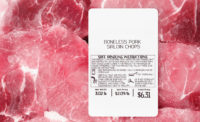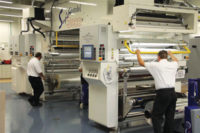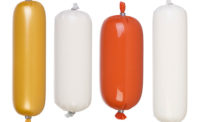With flexible packaging, there’s always something new. One reason is the growing demand for retort pouches.
According to a report from Transparency Market Research, Retort Packaging Market … Global Industry Analysis, Size, Share, Growth, Trends, and Forecast 2017 – 2024, the value of the global retort packaging market will grow at a compound annual growth rate (CAGR) of 7.45 percent to reach $24,706 million in 2024 from $14,945 million in 2017. Projections call for volume to mirror the value growth quite closely with a CAGR of 6.7 percent to 72,492 million units in 2024.
Retort packaging offers many benefits, including light weight, convenience, aesthetic appeal and hygiene. Factors influencing market growth include rising demand for ready-to-eat meals, innovations in packaging for baby and toddler food and the mushrooming of supermarkets and hypermarkets across urban areas.
On the down side, beyond its light weight, retort packaging doesn’t score many sustainability points. As a result, the report notes, research and development activities are laser focused on eco-friendly materials. Other action is in development and use of clear coatings to impart a barrier to oxygen and water vapor and meet consumers’ preference for transparent high-barrier films. Sealability is another characteristic receiving attention.
Polymer advances mean higher performance films. One new film feels like paper when touched. An additive in the resin provides this effect. Targeted as a replacement for coated or waxed paper deli wrap, the synthetic paper tears in any direction and offers enhanced moisture resistance and barrier properties.
For freezer applications, enhanced resins enable production of film that that runs better on high-speed equipment and reduces the chance of package failure. Cold temperatures do not affect the film’s toughness. Other attributes include low seal initiation temperature, formability, stiffness and barrier properties. This combination of features often enables downgauging. Thinner gauges can provide material cost savings and generate sustainability advantages across the supply chain since lower weight reduces shipping costs.
Reducing energy consumption is another environmental positive. Since sealing typically consumes significant amounts of energy, considerable attention is being focused on reducing the temperatures needed for good seal integrity. As a result, new skin packaging films have been developed that seal at temperatures approximately 50 degrees C lower than conventional skin films. Designed for meat and seafood applications, the films are puncture resistant and available in multiple gauges.
Another area of development for flexible packaging is active packaging, which interacts with the food to absorb deleterious substances or emit quality- and freshness-preserving substances. One of the most interesting efforts in this arena is NanoPack, a three-year project funded by the European Union. Its goal is to extend shelf life by reducing microbial activity. The technology encapsulates essential oils with antimicrobial properties into Halloysite aluminosilicate nanotubes. The resulting material is blended with resin prior to production of a packaging film. According to NanoPack, after packaging, the antimicrobial agents in the film vaporize into the headspace to sanitize the product surface and the interior of the package.
Large-scale production of multilayer NanoPack packaging films has been demonstrated, and work continues on films with different compositions. The technology is one of four finalists in the Resource Efficiency category of the Packaging Europe Sustainability Awards 2018 and has the potential to help the EU meet a proposed goal for food waste reduction: 50 percent by 2030, a savings of approximately 44 million metric tons. NP




Report Abusive Comment